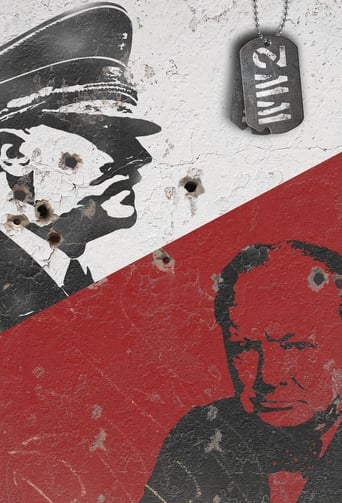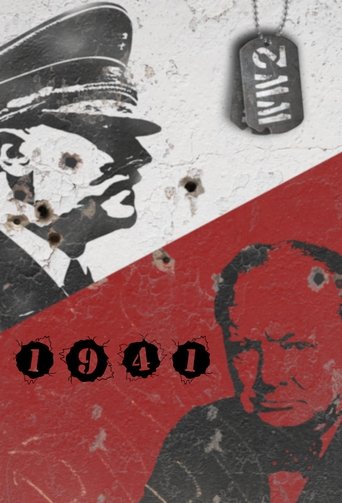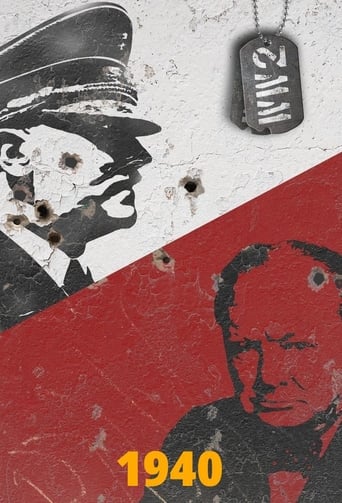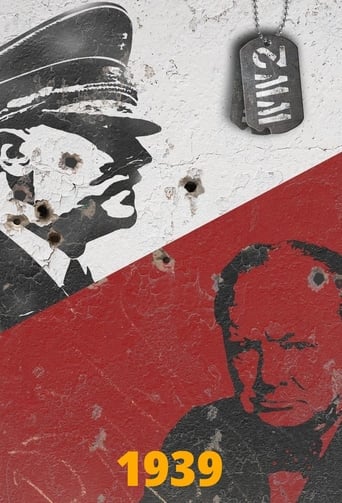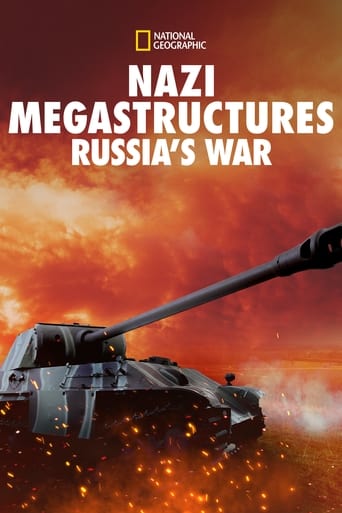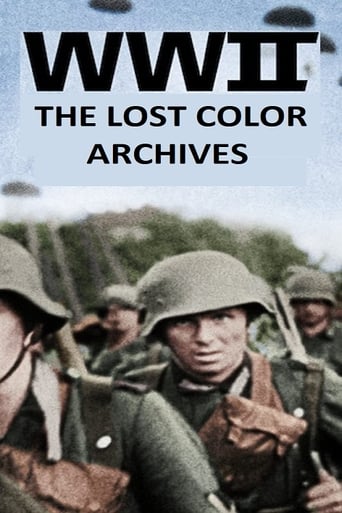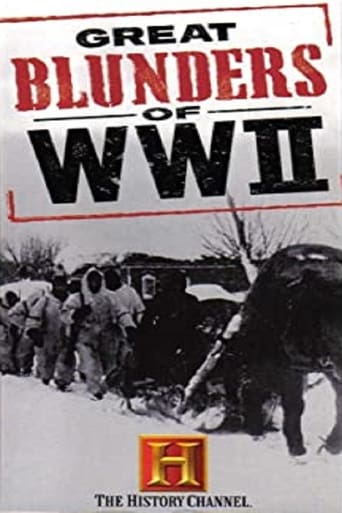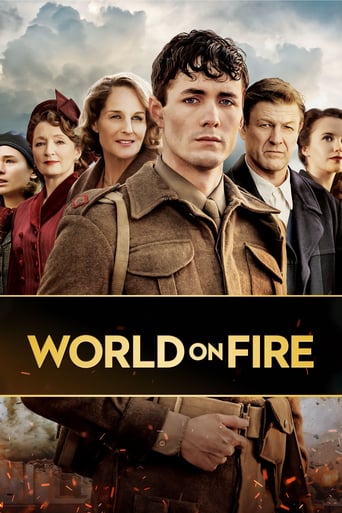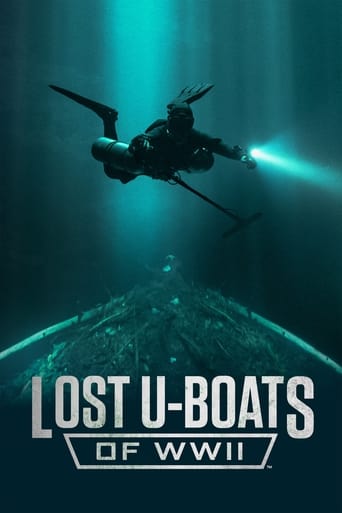World War Two Season 7
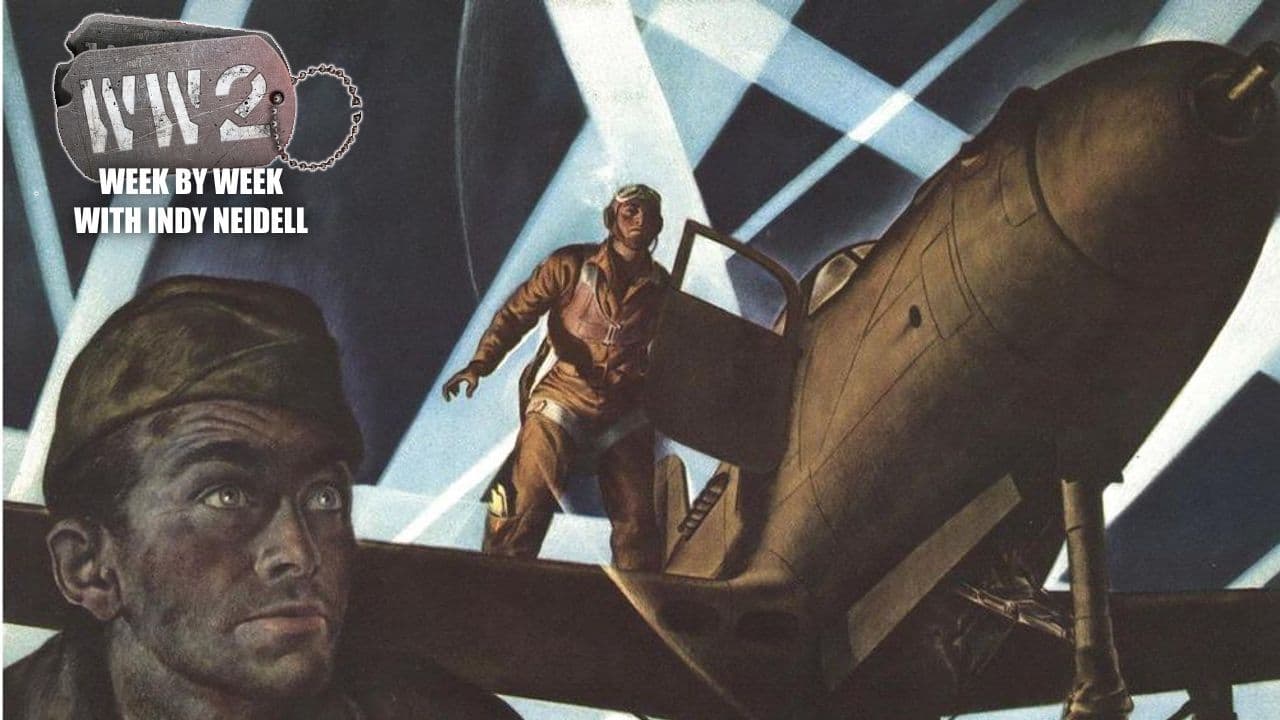
Follow the deadliest conflict in human history in real time, week by week, blow by blow.
Watch NowWith 30 Day Free Trial!
World War Two
2018
WW II year 1945
Watch Trailer
With 30 Day Free Trial!
World War Two Season 7 Full Episode Guide
The Japanese sign the official document of surrender and the Second World War is over. There are still some Japanese garrisons yet to surrender, but they begin doing so one after the other. However, war is not over- and there is serious foreboding for future events in places like Vietnam and China - where Mao Zedong is meeting with Chiang Kai-Shek, even as Josef Stalin lurks in the background to secure Soviet interests no matter which Chinese regime comes out on top.
Mao Zedong takes his first ever journey by plane to go and meet with Chiang Kai-Shek. They begin what will be several weeks of talks and negotiations. However, Chiang is not aware that Josef Stalin is lurking in the background. And the Soviet Red Army is lurking in Manchuria, having defeated the Japanese there, and are giving tacit support to the Chinese Communists, whose power base is very strong in the north. As for Japan, a motley collection of Allied fleets arrives in Tokyo Bay, for Japan's surrender document is to be officially signed two days from now.
The Soviet Red Army completes its conquest of Manchuria and the northern half of Korea this week, although Japanese Emperor Hirohito announced Japan's surrender already last week. Behind the scenes are machinations going on by Josef Stalin and Mao Zedong that they hope will lead to a Communist China in future. Vietnam might well be going communist right now, though, for the August revolution continues with the Viet Minh taking ever more control.
Hirohito broadcasts Japan's surrender to the world- despite an attempted to coup to prevent it from happening, and much of the world celebrates, but the war isn't really over. The Soviets are busy invading Manchuria, and there's revolution in Vietnam and Indonesia.
This week atomic bombs are for the first time in history dropped on cities- Hiroshima and Nagasaki in Japan. The bombs kill over 100,000 people and flatten large parts of the urban area. The Japanese government is actually meeting while the second bomb is dropped to consider their response to the first and to the demands for unconditional surrender. The response is not just to that first bomb, though, for on the 8th the Soviets tell the Japanese not only that they will not help them negotiate some sort of settled peace with the other Allies, they too are declaring war on Japan, and indeed invade Manchuria. With two atomic bombs and an invasion instead of mediating help, Japanese Emperor Hirohito cuts off any debate and says that Japan will surrender. This could happen next week.
The Japanese reaction to the Allied ultimatum for unconditional surrender is... mokusatsu. This can be translated several ways, but all involve not giving a response. Meanwhile, materials for atomic bombs to be dropped on Japan are delivered to Tinian, though the ship making the delivery is sunk by a Japanese submarine days afterward. The active war continues in Burma and China, and the Potsdam Conference ends in Germany with the map of Poland very much re-drawn.
China, Britain, and the US issue a Declaration demanding Japan's unconditional surrender, and promising complete destruction if this does not happen and happen soon. The plan is to for the Americans to use their atomic bombs on Japan if she does not comply, but by the end of the week the Japanese have not replied. They still have hopes for the Soviets to mediate some sort sort of peace. What they don't have is a navy, as its final destruction comes this week.
This week the Americans explode a nuclear bomb at the Trinity Test in New Mexico. The plan is to possibly use more such bombs against targets in Japan. US President Harry Truman is meanwhile in Germany for the Potsdam Conference with other Allied leaders to hammer out some details of the postwar global order. The active war continues, of course, in Burma, Borneo, the Philippines, and China, with the Japanese being defeated everywhere.
Japan is aware that soon enough the Allies will invade the Home Islands, and they will mobilize absolutely everything and everyone they can for their defense plan, "The Glorious Death of the 100 Million". In the meantime, Allied carrier forces keep hitting them, the Australian advance on Borneo continues, the Chinese advance on Guilin continues, the Allied rebuilding of Okinawa continues, and American preparations are nearly complete for a test detonation of an atomic bomb.
Australian forces land at Balikpapan to hopefully secure the oil facilities there; In Burma, the Japanese try a diversion to allow some troops to escape the country, but the timing is not what it should be; in the Philippines there is an American landing on Mindanao, but behind the scenes there are those wondering if they really need to push Japan for complete unconditional surrender.
The casualty projections for the planned November invasion of Kyushu, Japan are in... or are they? They might have been 'massaged' a little to sell the operation more easily. The fight in the field still goes on, though, with parachutes flying over Luzon as more American troops land, and an Australian advance on Borneo.
Mitsuru Ushijima's forces are defeated and the Battle of Okinawa is officially over. However, since most of the Japanese fought to the death, victory comes at a bloody cost- over 50,000 US casualties and over 100,000 Japanese and also possibly that many Okinawan deaths. The fight on North Borneo continues, there's a raid on Wake Island, and the Japanese powers that be meet to actually discuss making some sort of peace with the Allies.
After several weeks of the Congress of the Chinese Communist Party, Mao Zedong's power has consolidated to the point that it is absolute. All pledge loyalty Mao, and his infallibility shall not be questioned. Meanwhile the war goes on in the field with Australian landings on Brunei, continuing fighting on Okinawa, and the last part of Europe- in the Netherlands- liberated from Axis control.
The plans to invade the Japanese Home Islands in the fall grow ever more concrete, with the main issue being not just how to transport men by the millions around the world, but where to put them once they get there. On land the fight continues in Okinawa and the Philippines, and at sea the American fleet is savaged by a typhoon for the second time in six months.
This week President Truman and his aides meet to discuss the use of the atomic bomb. In Japan, the imperial government vows to fight on even as Yokohama is turned to ash by firebombing. On Okinawa, Japanese 32nd Army withdraws from the defences of Shuri Castle but there is still plenty of hard fighting left for the Americans. There are US Navy command reshuffles and the stage is set for an Allied conference in Potsdam.
This week, the fighting in Europe finally comes to an end and the Allies round up more leading Nazis including Heinrich Himmler and Karl Doenitz. In Asia, the fighting continues on Okinawa even as the Japanese start pulling back. The Australians continue fighting on Tarakan, and the Chinese are victorious in western Hunan.
The kamikaze menace continues unabated, with suicide flyers hitting not one but two Admirals's flagships. There's plenty of fighting on land, though, as the Americans advance on Okinawa and take a dam on Luzon to try and solve the Manila water crisis, but even after last week's German surrender there is also still scattered fighting in Europe.
Germany signs not one, but two unconditional surrenders and the war in Europe is officially over... although that does not mean that all the fighting in Europe is, for there is fighting and surrenders all over Europe all week. The Japanese launch a counteroffensive on Okinawa; the Chinese launch one in Western Hunan; the Australians advance on Borneo and New Guinea; and the fight continues on Luzon in the Philippines, so there is still an awful lot of the world war to come, even with the end of the war in Europe.
I don't want to give too much away about this extra regular episode here in the description, but it's true- German and American soldiers fought side by side in the waning days of the European part of WW2, and not just once! And the second time is an all-time great tale of adventure.
So much goes on this week, and this is the longest episode of the war by like 15 minutes. But there's so much to cover! The Battle of Berlin ends; the war in Italy ends; the war in Burma ends- well, it ends officially, though there are still tens of thousands of Japanese soldiers scattered around Burma. And there's a whole lot more to these stores and a whole lot more stories this week in the war. You can't miss this one.
Europe is broken, its cities in ruins and millions have died in war and genocide. The world has risen against the Nazi threat, and now the Nazi leader cowers in bunker under Berlin - this is how Adolf Hitler's last 15 weeks unfold, and why he ultimately chooses suicide to escape responsibility for his actions.
The Battle for the German capital rages on all week, as the Soviets get ever closer to the Reich Chancellery, under which lies Hitler's bunker. Berlin is surrounded, but can it be relieved? There are also Allied advances in East Prussia, Czechoslovakia, and in Western Germany, but beyond that, it looks like the Axis lines have completely collapsed in Italy. The Allies are also advancing- and quickly- in Burma toward Rangoon, though not much at all on Okinawa, and it is the Japanese who are on the move in Western Hunan. It's a real rollercoaster of a week.
The Soviet drive on Berlin continues, but it is now very much a race between the forces of Georgy Zhukov and those of Ivan Konev. In the west, over 300,000 Germans surrender to the Allies as the Ruhr Pocket is eliminated, though there are advances by all Allied armies this week on the whole Western Front. There is even an Allied breakthrough in Italy, though on Okinawa American attacks get nowhere. The Japanese are advancing in China, and in Burma the Allied drive for Rangoon continues.
The final Soviet assault on Berlin begins today. The Soviets have two million men supported by tens of thousands of guns, tanks, and aircraft. Opposite them stand millions of men and boys of the German Wehrmacht, Waffen SS, Volkssturm, and Hitler Youth. The forces of Nazism are weakened and disorganised but determined to fight on as long as possible.
The prizes of Vienna and Königsberg fall to the Soviets as they continue what seems an inexorable advance. In the West the Allies advance to the Elbe River, but there they are stopped by command. The big news in their national papers this week is the death of American President Franklin Roosevelt, which provokes rejoicing in Hitler's bunker. The Allied fighting dash for Rangoon continues in Burma, as does the American advance on Okinawa, although Japanese resistance is stiffening and they are beginning counterattacks.
It's the next step toward invading Japan's Home Islands- invading Okinawa, and it begins April 1st. Advances are easy by land, but at sea the kamikaze menace is in full swing. In Burma, plans are made to liberate Rangoon; in the west hundreds of thousands of Germans are surrounded in the Ruhr; and in the east, the Soviets begin assaults on Königsberg and Vienna.
All along the Western Front the Allies break out in force, invading German territory and receiving German surrenders by the thousands. In the east, the Soviets take Danzig and Gdynia, and rout the Germans in Hungary. There's a new Japanese offensive in China, though the fight on Iwo Jima ends with a Japanese defeat.
Chiang Kai-Shek is demanding his Chinese troops back from Burma, but this doesn't fit well with Mountbatten's plans for the region. In Burma, Bill Slim's forces liberate Mandalay this week and make plans to head south for Rangoon. There's also friction elsewhere in Allied command- between the Soviets and the Western Allies- over Italy. In the field in Europe, the Soviets advance all along the eastern front, and in the west, the Allies secure another Rhine crossing, and they also launch a double operation to send even more men across the river in force.
After the Allies took a Rhine Bridge last week, Adolf Hitler has again shuffled his commanders, moving Kesselring to the west. Meanwhile, the German offensive in Hungary comes to its end- and it does not end well for the Germans. The Japanese are nearly defeated Iwo Jima, are feeling a bit of desperation in Burma, but are far, far from defeated on Luzon.
The Allies manage to take an intact bridge over the mighty Rhine at Remagen, a major piece of luck; the Germans launch a new offensive in Hungary, and the Allies end one in Italy. Over in Burma, Meiktila falls, sabotaging the entire Japanese supply system for the country, and on Iwo Jima the fight continues, bloodier than ever for both sides.
Bill Slim's master plan is near fruition and the Japanese are surrounded at Meiktila in Burma. The Allies have also nearly cleared Manila on Luzon, but the fighting on Iwo Jima is just growing in intensity. In Europe, the Soviets are still on the move in Poland, though attacking now to the north, but in Hungary it's the Germans who are making plans for a new offensive. The big news on the Western Front is the Allies reaching the Rhine, though how they'll cross that mighty river is anyone's guess.
This week the Battle of Iwo Jima begins and American forces raise the Stars and Stripes on Mount Suribachi. Elsewhere, the Allies fight the stiff Japanese defences in Manila. The Red Army continues fighting through East Prussia and Pomerania as Stalin plans the next stage of the advance on the Reich. There are Allied advances in Western Europe and Italy too.
The Germans finally launch a counterattack into the Soviet flanks, but it does not go as well as was as hoped: The Siege of Budapest comes to an end, also not well for the Germans. The Soviets have now also surrounded Breslau. In Burma, the Allies cross the Irrawaddy River, in the Philippines the fight for Manila continues, and in the Pacific preparations are underway for an American invasion of Iwo Jima Island.
The American advance on Luzon has reached the Philippine capital, and it looks like they have a real fight on their hands with the Japanese there. There are supposed to be two new Allied operations starting in Western Europe, but one is delayed by flooding. The Allies do manage to eliminate the Colmar Pocket in the west, though. On the Eastern Front, there are new Soviet attacks in Pomerania and East Prussia, as well as out of the Steinau Bridgehead to the south, and in Budapest, it looks like the Soviet siege might soon end in victory.
Soviet forces have reached the old German border in force, however, logistical issues and a strong enemy presence possibly threatening their flanks means that a drive on Berlin may not be doable just now. Heinrich Himmler is in charge of the new Army Group to defend the Reich, and he has a host of problems. On the Western Front, the Allies finally eliminated the Colmar Pocket, and in the Philippines, the American advance reaches Manila, and the battle for the city is about to begin.
A new German Army Group has been formed, tasked with protecting the Reich from the east and commanded by none other than Heinrich Himmler, who has never held such a command. The Soviets are really on the move in the east and have even begun reaching the prewar German border. In the west the Allies have cleared the Roer Triangle and are also working hard to eliminate the Colmar Pocket. In the Far East the Americans are advancing on Luzon, and in Burma the Allies have success on the Arakan and the Shwebo Plain, and finally manage to re open the Burma Road with China.
The huge new Soviet offensives charge ahead this week, taking Warsaw and Krakow; in the west the Battle of the Bulge is officially called over... though there is still fighting there. On Luzon, the Americans push out of their beachhead, though there is heavy fighting to secure their flank.
In the East, the Soviets launch a massive series of new offensives. In the West, Monty holds an ill-judged press conference about the Battle of the Bulge. Operation Nordwind, the German offensive in Alsace, continues. In Hungary, there’s house to house fighting as the Red Army besieges Budapest. In Asia, the Allies wrestle with the Kamikazes, begin their landings on Luzon, and advance in Burma.
The Germans launch a new offensive, Operation Nordwind, in Alsace, even as their offensive in the Ardennes is stalled. The Allies in the west don't just have to fight these, they are also having serious issues amongst themselves in High Command that threaten their unity. The siege of Budapest is in full swing and is a hard, fought, bloody battle, and the Soviets and the Americans have big plans for new offensives soon to kick off in Eastern Europe and the Philippines (respectively).
Free Trial Channels
Seasons


